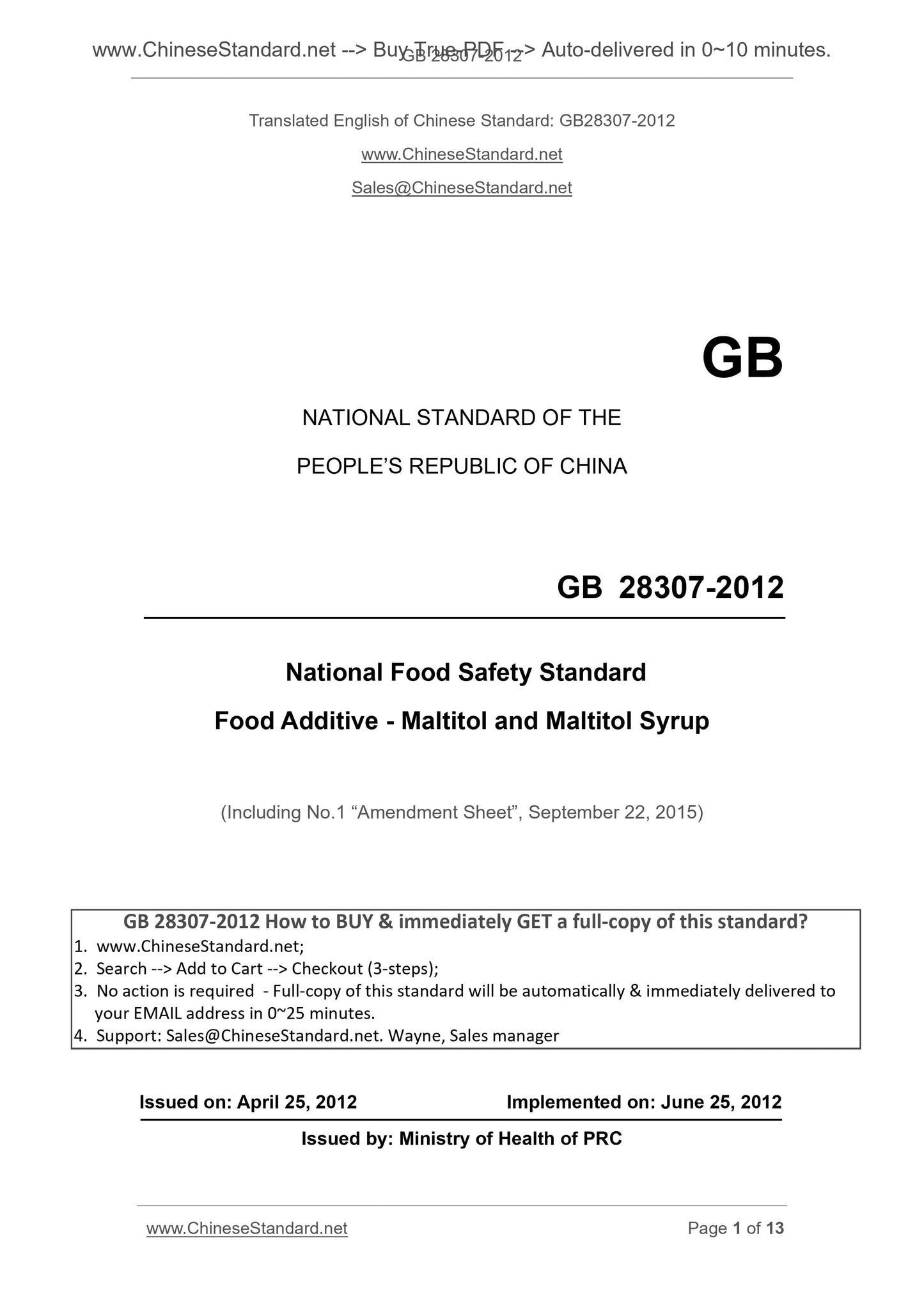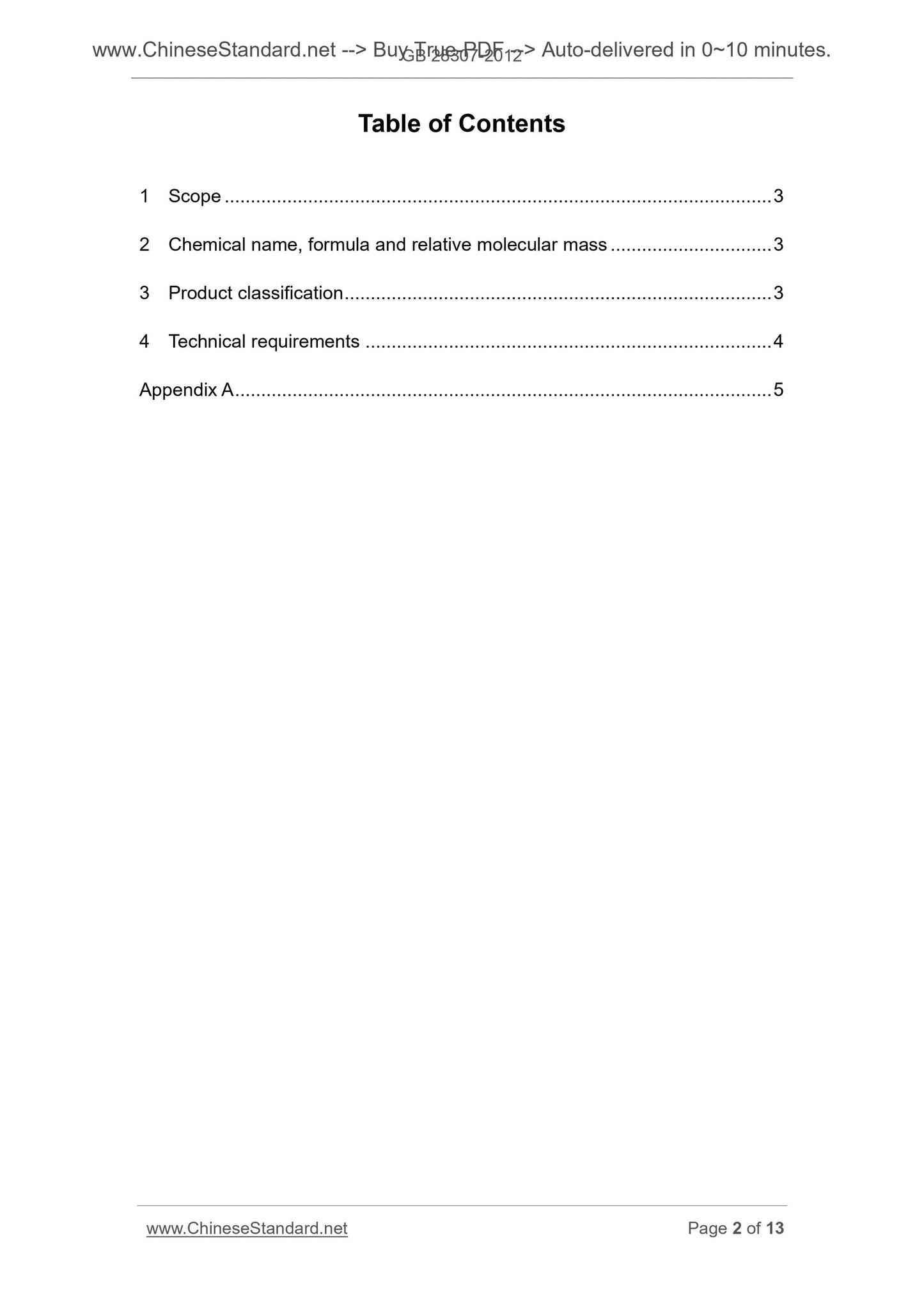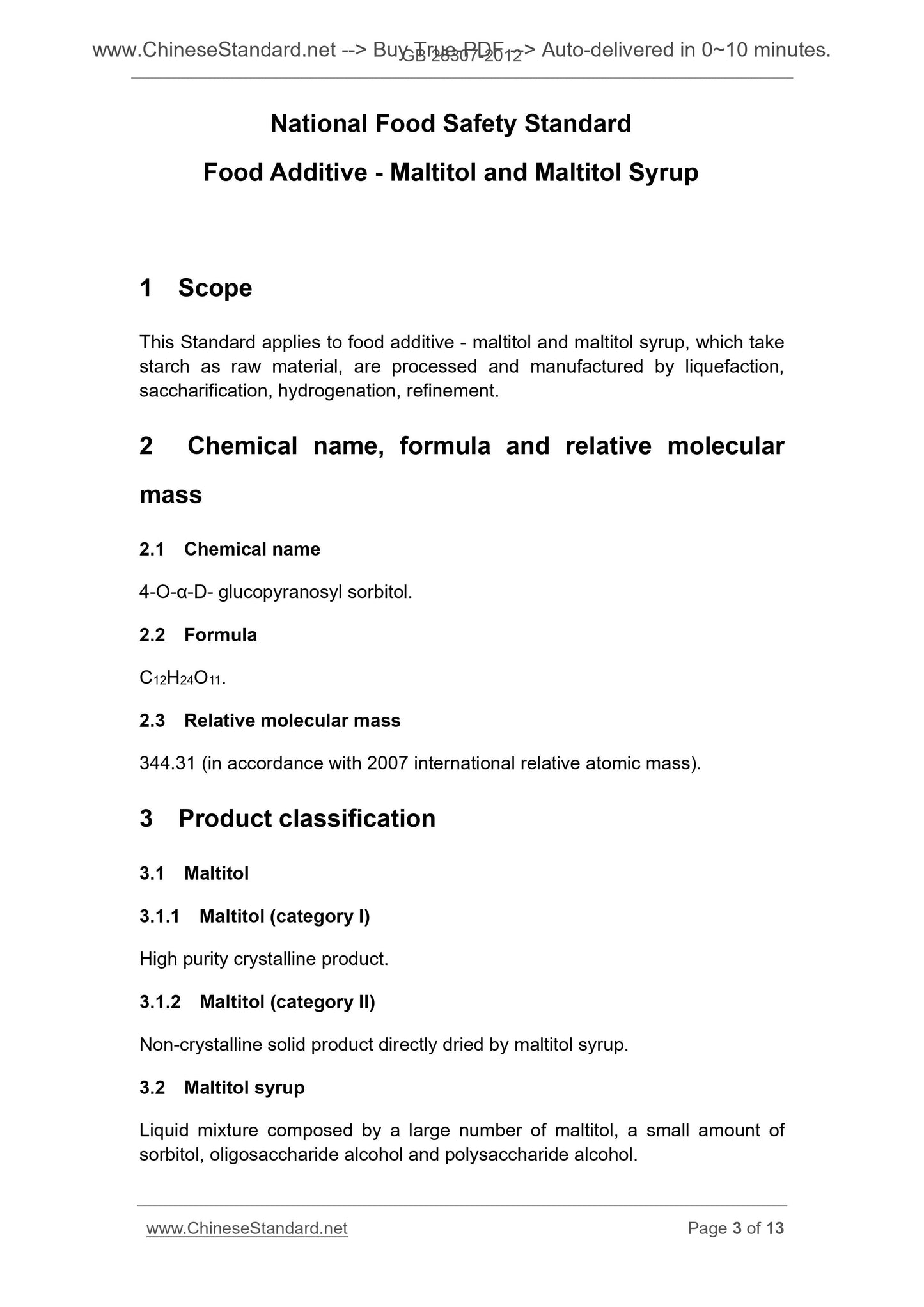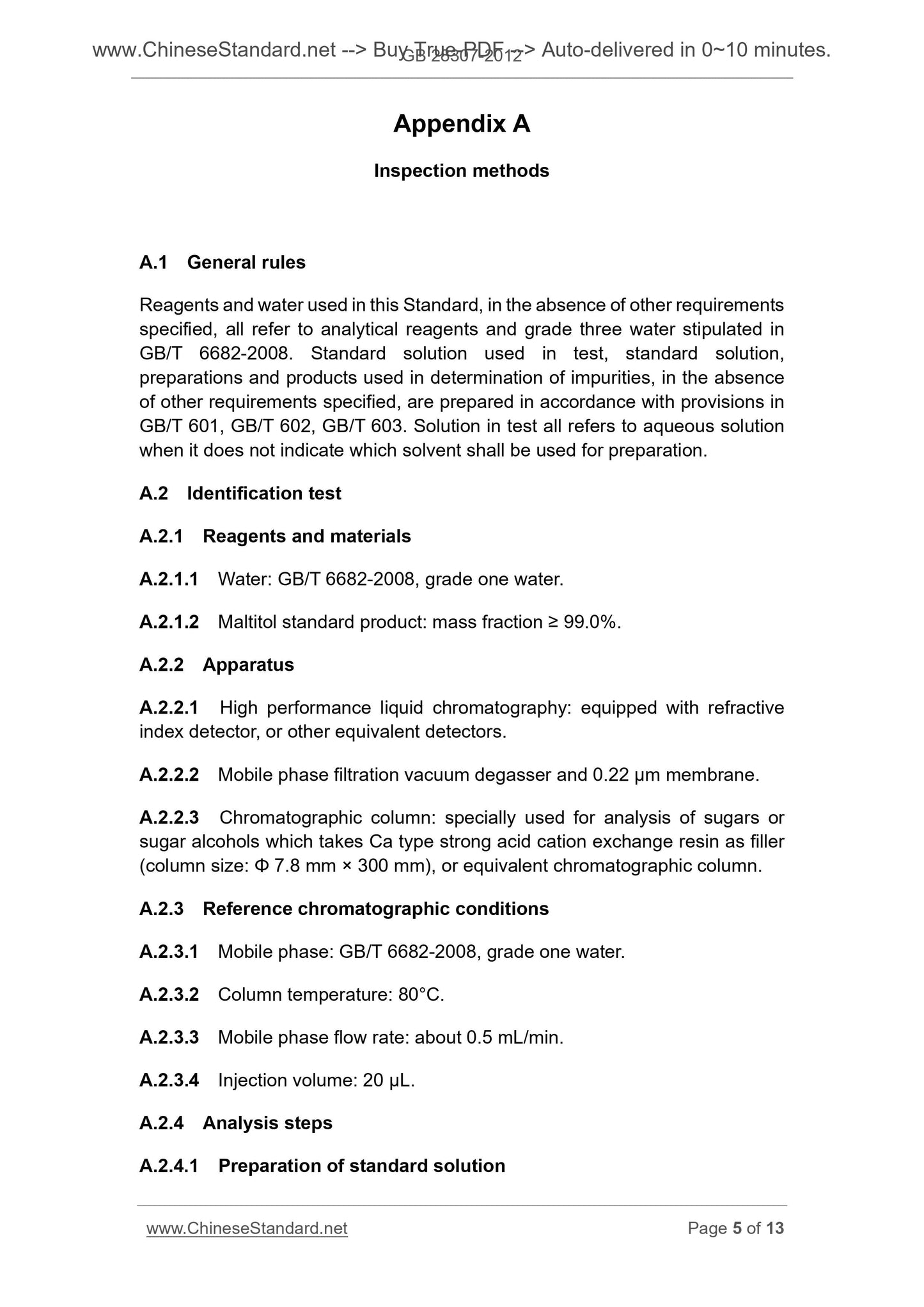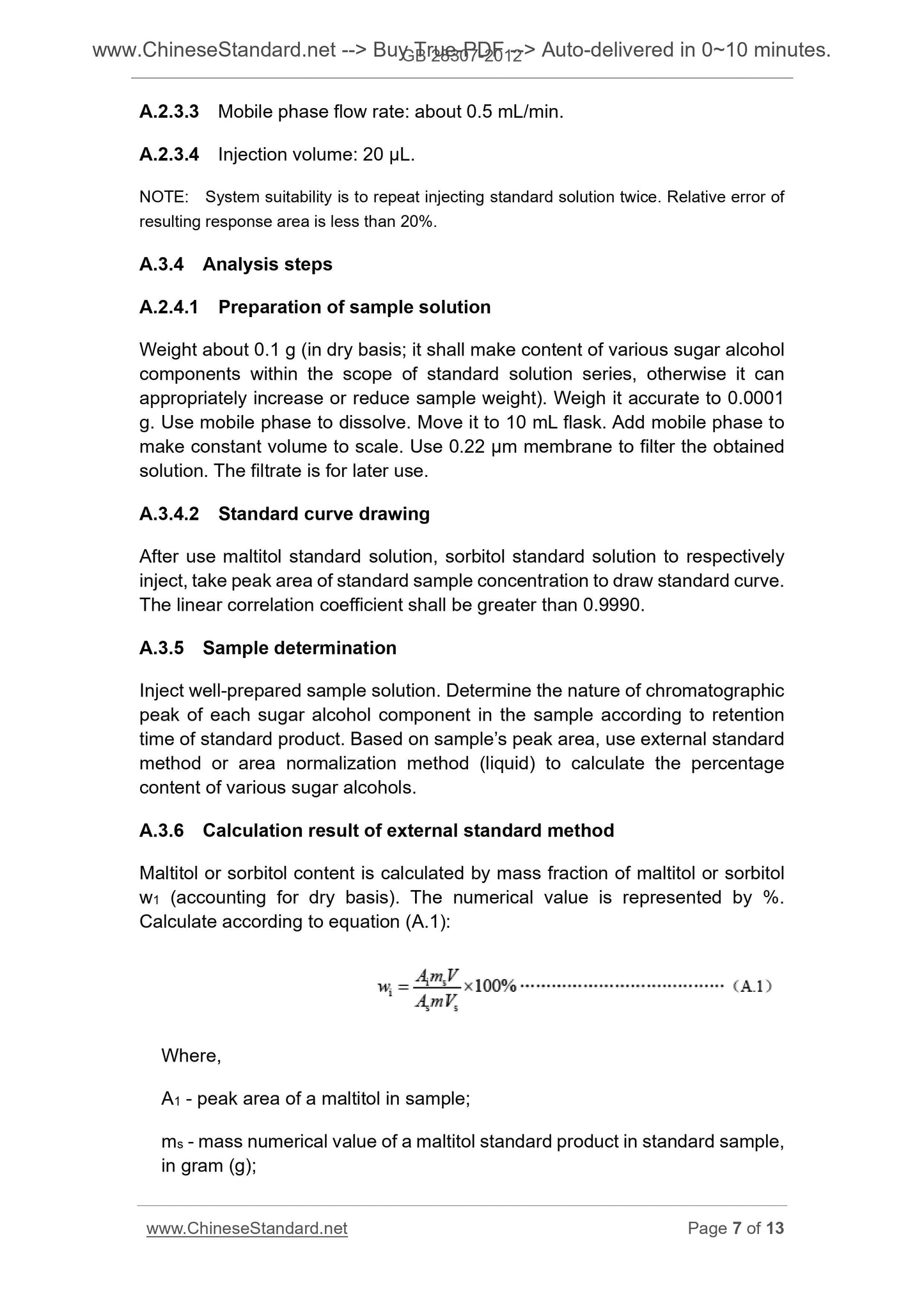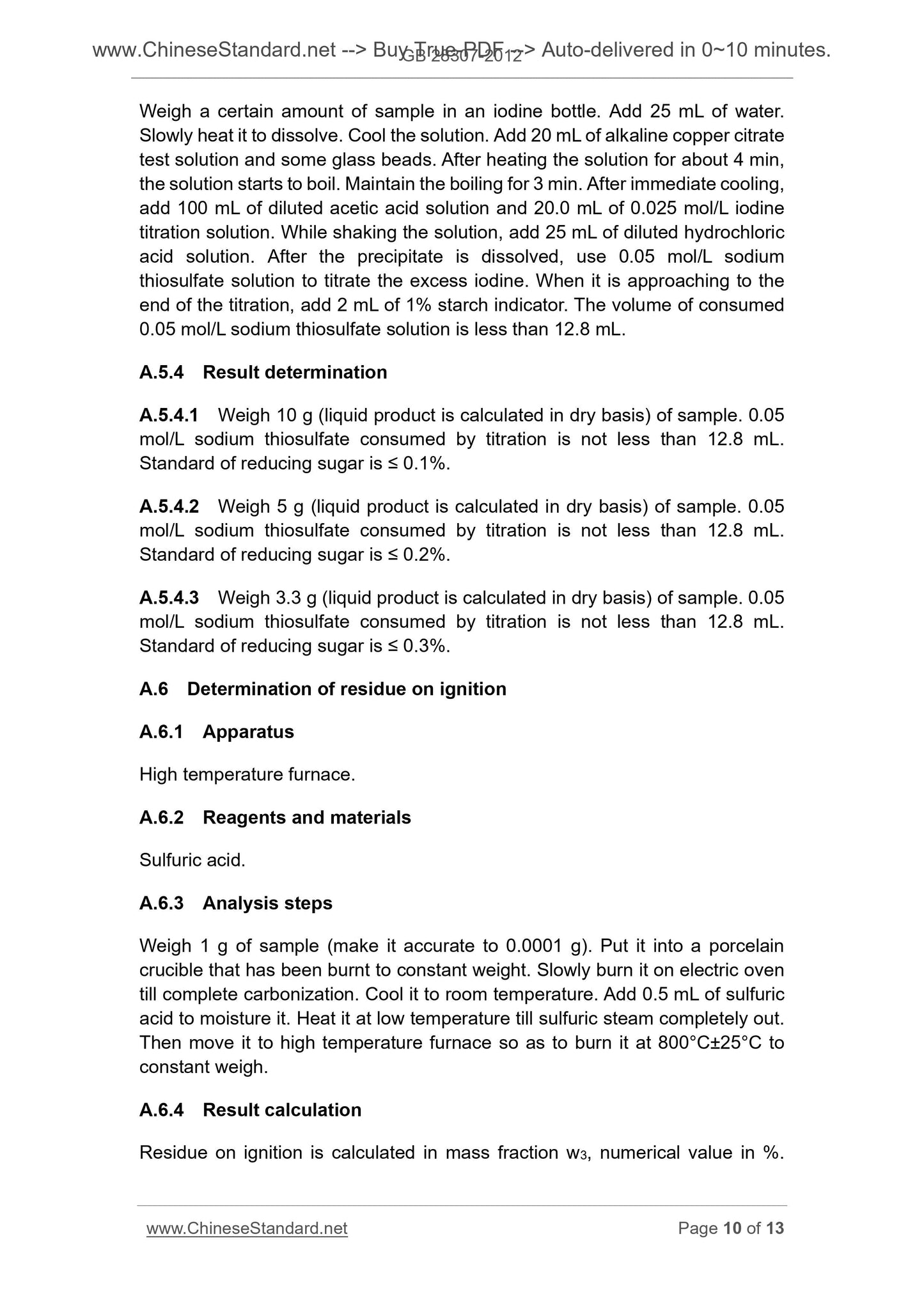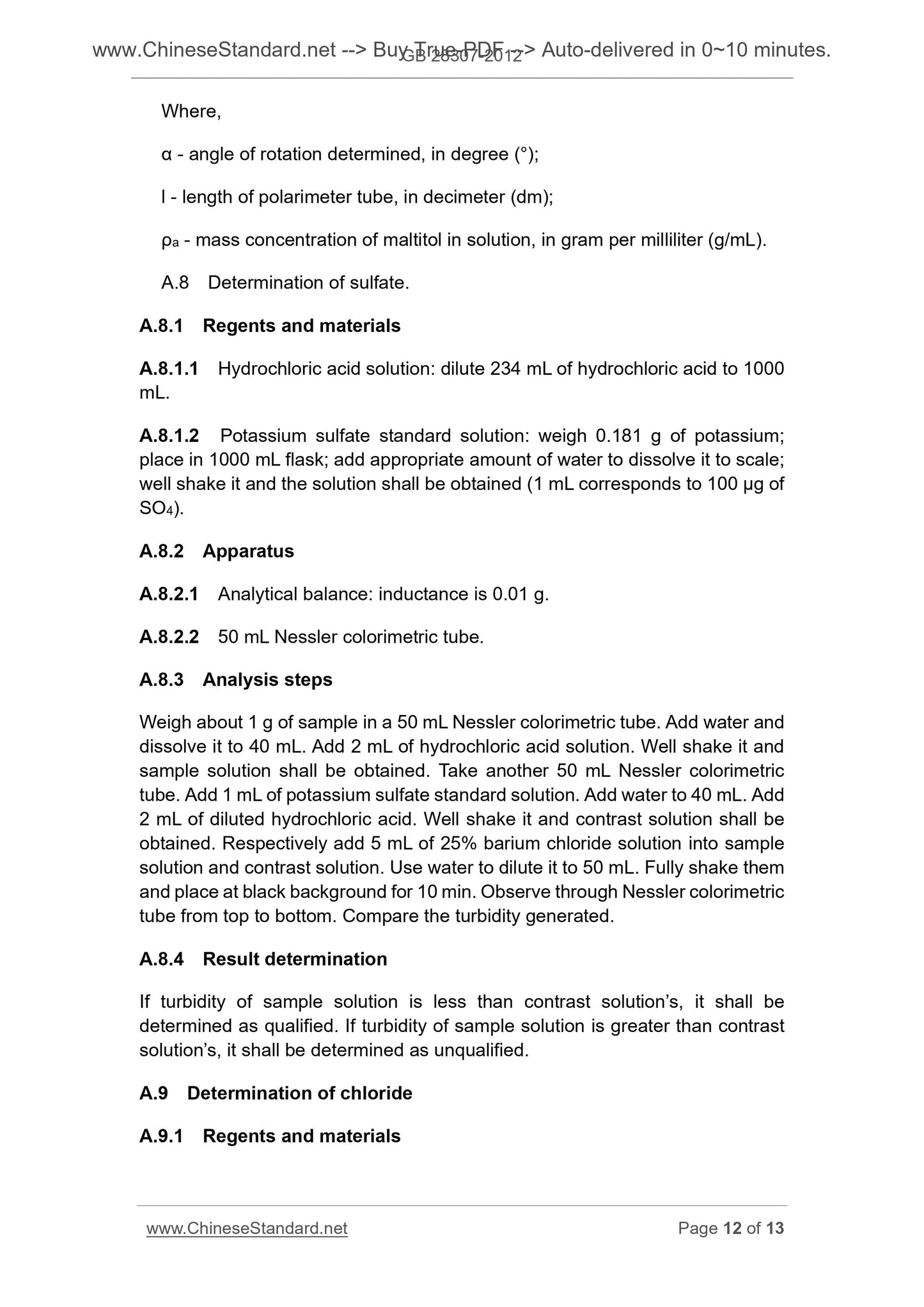1
/
of
7
www.ChineseStandard.us -- Field Test Asia Pte. Ltd.
GB 28307-2012 English PDF
GB 28307-2012 English PDF
Regular price
$140.00
Regular price
Sale price
$140.00
Unit price
/
per
Shipping calculated at checkout.
Couldn't load pickup availability
GB 28307-2012: National food safety standard - Food additive - Maltitol and Maltitol Syrup
Delivery: 9 seconds. Download (and Email) true-PDF + Invoice.Get Quotation: Click GB 28307-2012 (Self-service in 1-minute)
Newer / historical versions: GB 28307-2012
Preview True-PDF
Scope
This Standard applies to food additive - maltitol and maltitol syrup, which takestarch as raw material, are processed and manufactured by liquefaction,
saccharification, hydrogenation, refinement.
Basic Data
| Standard ID | GB 28307-2012 (GB28307-2012) |
| Description (Translated English) | National food safety standard - Food additive - Maltitol and Maltitol Syrup |
| Sector / Industry | National Standard |
| Classification of Chinese Standard | C54;X40 |
| Classification of International Standard | 67.220.20 |
| Word Count Estimation | 11,115 |
| Regulation (derived from) | Ministry of Health Bulletin 2012 No. 7 |
| Issuing agency(ies) | Ministry of Health of the People's Republic of China |
| Summary | This Chinese standard applies to starch as raw material, liquefaction, saccharification, hydrogenation, refining and other processing of food additives produced liquid maltitol and maltitol. |
Share
